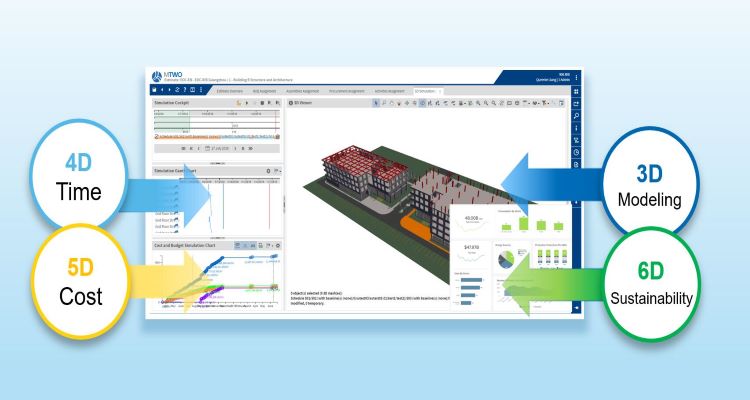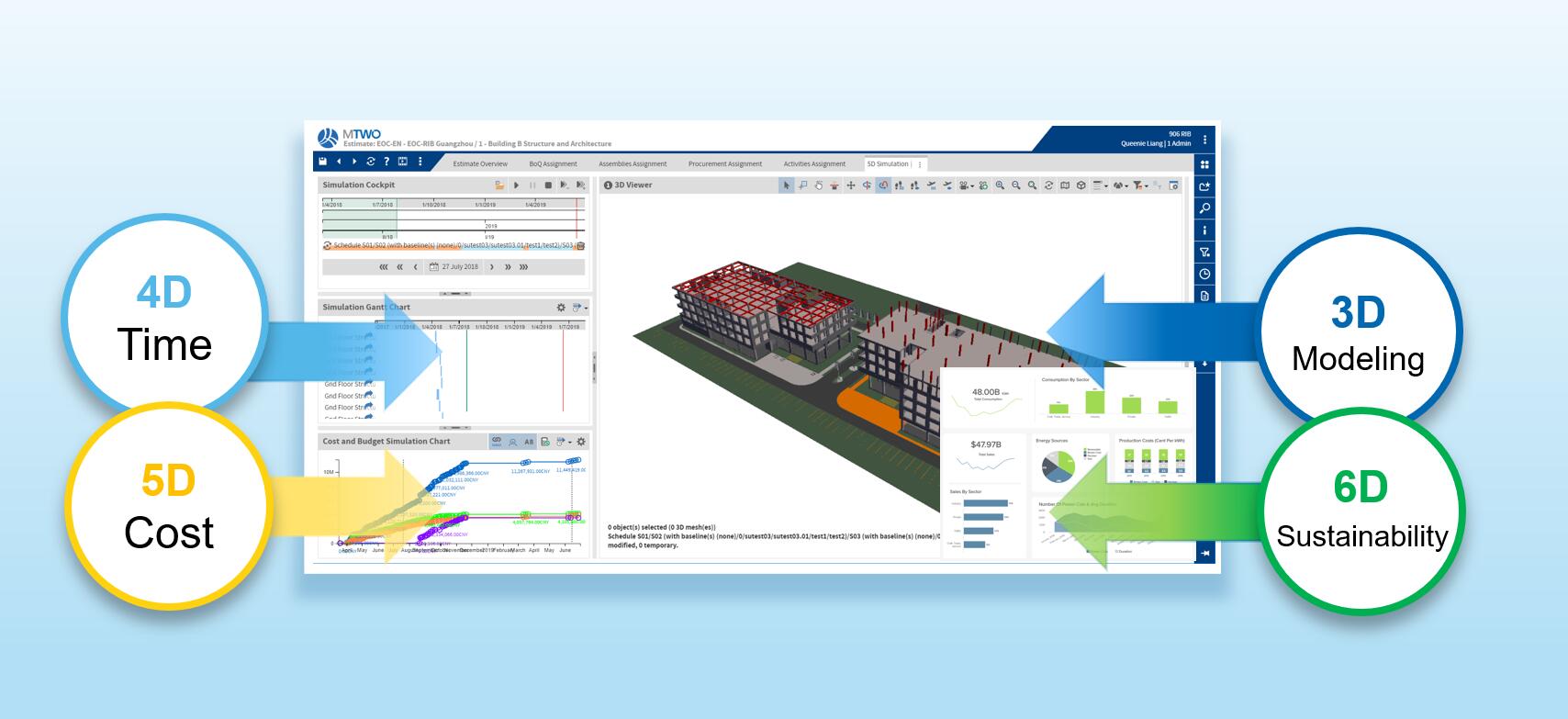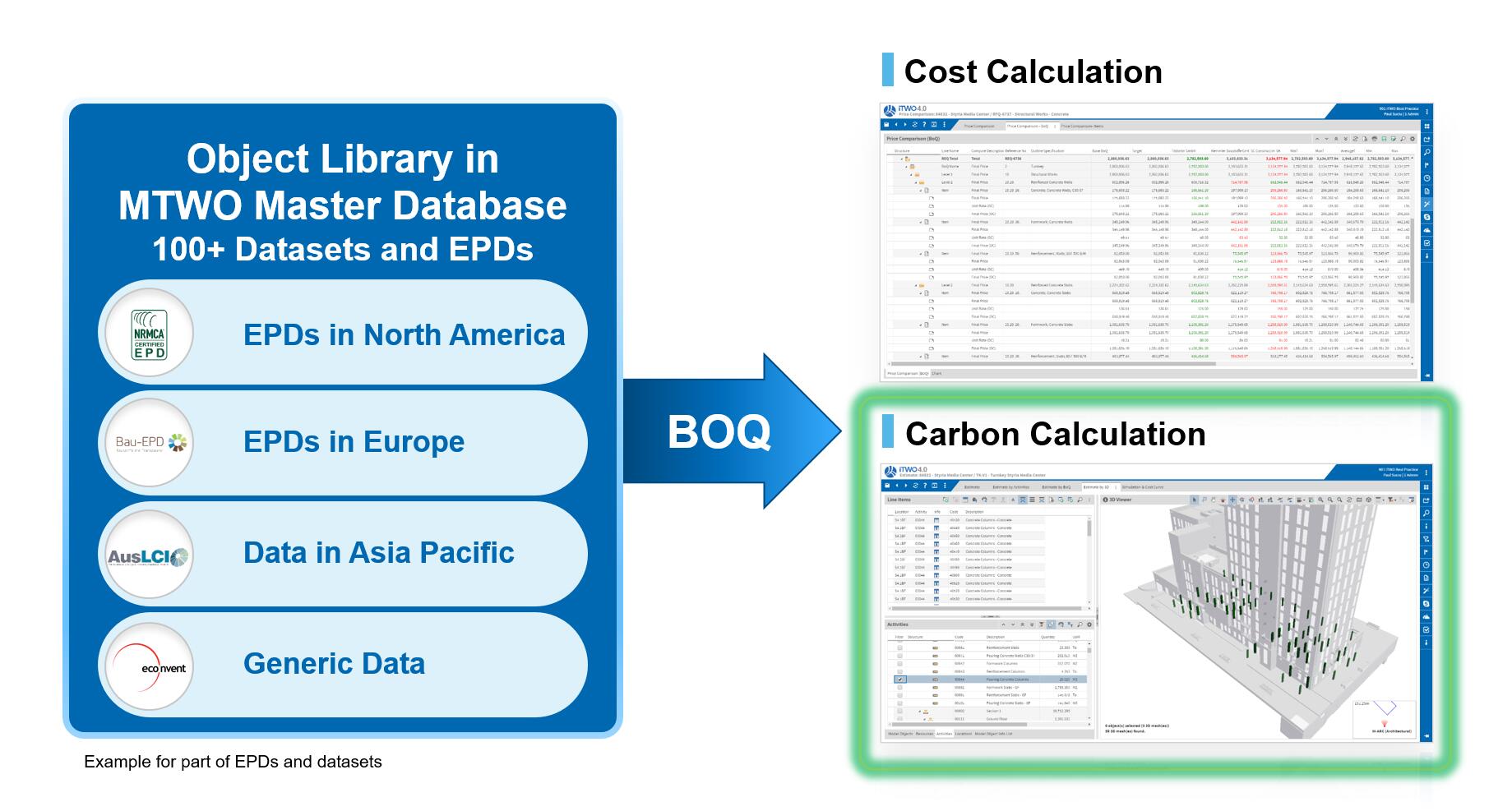Technical Area | Articles
The place to solve all your BIM doubts
6D BIM: powering sustainability in the construction industry
Embed sustainability in the way you think, act, and do business
Sustainability Strategies
Why should construction companies care about sustainability?
A sustainable future is the concern of us all, and so we need to work together to minimize or even avoid putting stress on our environment. If we want to meet the targets set out in the Paris Climate Agreement, it is essential that the Architecture, Engineering, and Construction (AEC) sector is committed to environmental protection and be a leader in moving towards decarbonization.
What does this mean for companies in this sector? Organizations that focus on sustainable building and construction can:
• Future-proof their business by providing a competitive differentiator in the market and remain a step ahead.
• Be compliant with potential government regulations or restrictions of carbon emission.
• Improve employer reputation and employee performance, thereby attracting and retaining future talents.
• Save costs from less waste and more energy-efficient building operations, making the most of natural resources and renewable energy.
Sustainability is a journey
Depending on where your business is on the journey of digitalization, we can all agree on one thing: the power of the almighty certification stamp to satisfy the requisite of authorization from higher entities. In essence, however, this is nothing more than motivation, and indeed, with motivation comes inspiration.
Sustainability, therefore, is a journey that propels our industry to new endeavors and to reach new heights, and do things differently. Technology is the enabler that will help drive more and more businesses to place sustainable practices and technologies as one of their core processes. VDC (Virtual Design and Construction) tech and IPD (Integrated Project Delivery) methodology are examples of these technologies and practices as they allow us to build virtually before executing physically, optimizing a project not only from the financial, scheduling, procurement, and risk management point of view. They can immediately save not just time and cost, but also reduce waste, and in some cases, enormous amounts of waste. By placing sustainability in your business as a core process, waste, emissions, and your carbon footprint can all be dramatically cut from the building process.

Embed sustainability in the way you think, act, and do business
Sustainability and Environmental, Social, and Governmental (ESG) goals are not something that sits peripheral to your business strategy, and so should be embedded in the company so that it impacts the way you think, act, and do business. This paradigm shift can enable an organization to embed sustainability into their products, services, the way they cater for their clients, and the manner in which they manage their organization and stakeholders.
MTWO is adding the 6th Dimension of sustainability to its 5D BIM
How can enterprises in the construction industry achieve a sustainable future without compromising their productivity? Our answer: digital transformation – transforming how we plan, build, and operate our buildings. And to this end, RIB’s flagship construction management platform, MTWO Construction Cloud, is adding the 6th Dimension - the carbon factor - to its 5D BIM (Building Information Modeling).
MTWO Construction Cloud connects all people, processes, and data from project concept to completion, to break silos, maximize efficiency and achieve sustainability. When designing a building project, many decisions are made that will inevitably impact project efficiency and energy consumption. MTWO Construction Cloud enables 6D simulations of different design options, in which the 3D design model is integrated with the schedule (4D), cost (5D), and the carbon factor (6D), enabling teams to compare options side by side and to optimize the project. For instance, using more energy-efficient materials, identifying risks, and avoiding the non-conformance that would otherwise produce waste and rework on site.

Before integrated platforms were available, this was done by the ‘big-room collaboration’ methodology, where key stakeholders sat in the same room with whiteboards and sticky notes. From there they discuss the potential challenges and the issues that might pop up in the project execution and try to alleviate those constraints before pitching a shovel on the site.
Built-in object library for carbon calculation
The object library in the MTWO Construction Cloud master database has over 100 datasets associated with carbon and Enterprise Product Partners (EPD) from Europe, North America, Asia Pacific, and the list is growing. By creating a BoQ in MTWO, all the work packages can be monitored to avoid material waste, quantifiable not only in time and cost, but also in carbon, be it embodied carbon or carbon created in the process, all the while, linking with the cost libraries.

Qualify material suppliers to minimize embodied carbon
Material suppliers, logistics vendors, contractors, and building users on the MTWO platform will give project leaders much better visibility of the design options, materials, and process choices that can then be quantified, optimized, and monitored for their carbon emissions throughout their lifecycle, from the procurement phase, right through to the operation and maintenance phase.
Carbon tracking and control: dashboard
The MTWO Control Tower facilitates dashboards that give an overview of all projects of an enterprise. The wider stakeholders have real-time access to information so that they can be more proactive rather than being reactive when managing projects. The platform gives early warning indicators so that teams can find ways to rectify and solve issues before a larger and more serious negative impact is materialized. The dashboard displays embodied carbon, assisting in optimizing the lifecycle sustainability of that asset.
Open API allowing for third-party software
There are different tools available in the market that do excellent energy optimization. As an open platform for the wider supply chain, MTWO retains an open front end towards these design inputs. With its built-in object library and open API, the embodied carbon data is available in MTWO.
Benefits of MTWO Construction Cloud from the sustainability aspect:
• Minimize waste of materials, equipment, and human resources by optimizing planning and control with 6D.
• Reduce carbon emissions from the transportation by connecting everyone on the integrated digital platform.
• Enhance the selection of green materials with intelligent business partner management and procurement processes.
• Reduce carbon emissions from the transportation of materials and equipment by optimizing the supply chain.
• Reduce the use of paper with intelligent workflow management and all data easily accessible on the platform for everyone.
• End-to-end product environmental footprint calculation and qualification.
• Open “building passport” platform to integrate structure and unstructured data sources coming from a fragmented and non-standardized ecosystem.
• Model-driven caron footprint simulation based on the Product Footprint (PPE) methodology.
• Extend the approach to the types of equipment inside the DC.
• Maximize access to recycled materials (as cost comparison with extracted materials projected to become more competitive).
• Open the door to retrofit project – showing carbon footprint positive impact in case of a refurbishment of existing facilities,
• Open the door to other future buildings.
Software
MTWO Construction Cloud iTWO RIB SoftwareSource: https://www.mtwocloud.com/post/6d-bim-powering-sustainability-in-the-construction-industry











